Biomechanics: Lever Systems in the Body
Posted on 7/29/20 by Desiree Parent
Have you ever noticed how much easier it is to do a calf raise with 50 lbs than it is to perform a 50-lb bicep curl? Is it because your bicep is smaller or weaker than your gastrocnemius? Perhaps! But even if your muscles were equally as strong, it would still be easier to perform a calf raise than a bicep curl. Why is this?

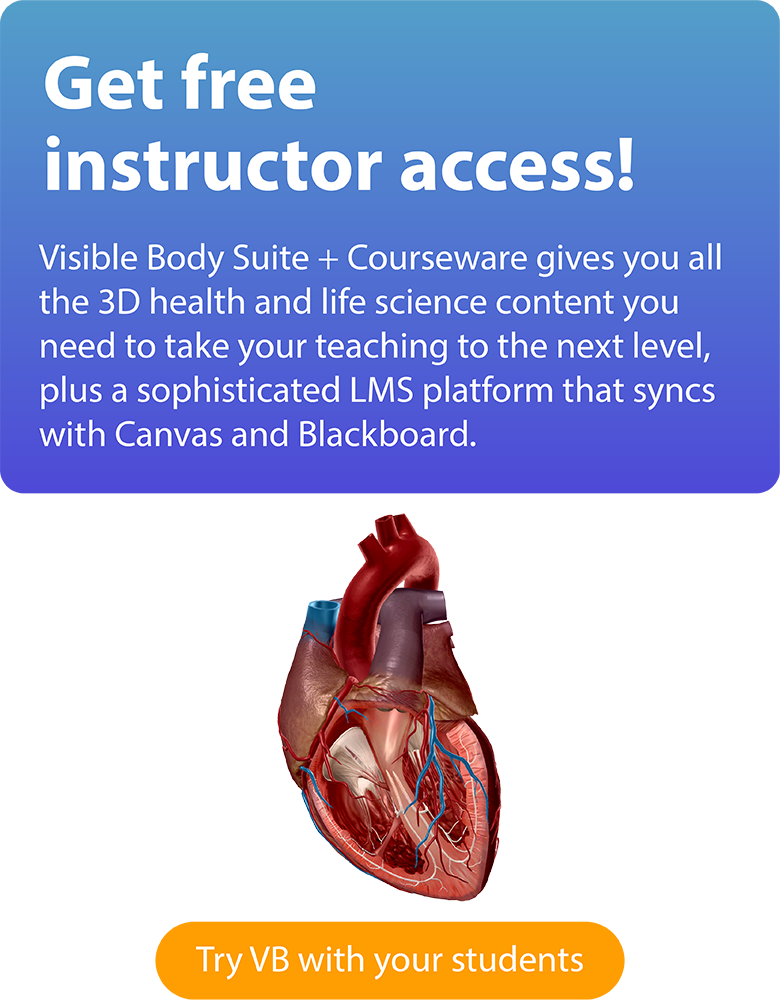
Our bodies are composed of a variety of synovial joints that function as lever systems. The reason it’s easier to perform a weighted calf raise than a bicep curl is because the lever system involved in a bicep curl is mechanically less efficient than the lever system involved in a calf raise.
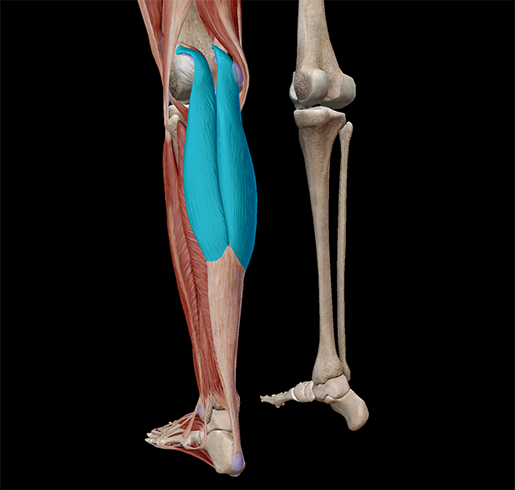 The gastrocnemius muscle. Image from Visible Body Suite.
The gastrocnemius muscle. Image from Visible Body Suite.
Parts of a Lever
Synovial joints are moveable joints; a few examples of these are the shoulder, spine, knee, elbow, and ankle. To understand why some synovial joints have more efficient lever systems, we must first understand the relationships between the three lever parts: an effort or force applied to the lever, a fulcrum, and a load. A synovial joint also has these: effort (a muscle’s applied force at the insertion site of a bone), a fulcrum (the joint axis), and a load (the body part/weight to be moved).
The Three Types of Levers
There are three different kinds of levers: first class, second class, and third class. Each of these lever classes have unique arrangements of the muscle’s insertion (effort) and bones (lever/arm) around the joint (fulcrum). See the chart below to visualize the difference between the levers:
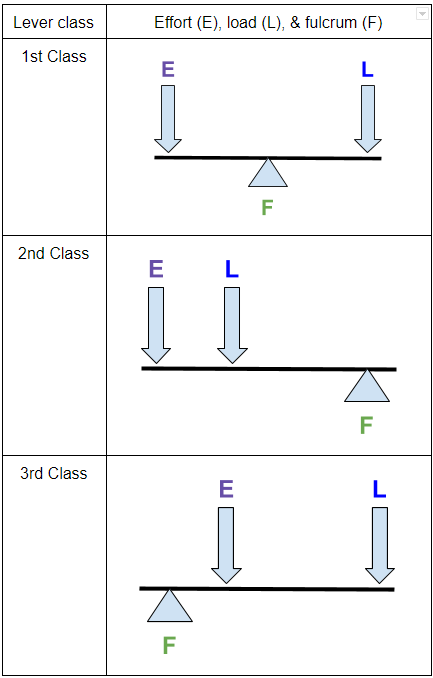
Effort Arm vs. Load Arm
The efficiency of a lever relies on the ratio of the effort arm to the load arm. The effort arm (EA) is the distance between the fulcrum and the effort; in the body, this is the distance between the joint and the muscle’s insertion site. The load arm (LA) is the distance between the fulcrum and the load; in the body, this is the distance between the joint and the loaded body part.
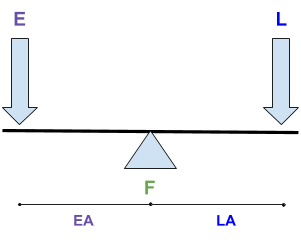 The greater the ratio of the effort arm to the load arm, the more efficient the lever system is (i.e. the easier it is to move the load). Therefore, if the distance between a muscle’s insertion site and the joint is greater than the distance between the load and the joint, your muscle is at an advantage. This is why your gastrocnemius can lift more weight than your bicep, even if they are equally as strong!
The greater the ratio of the effort arm to the load arm, the more efficient the lever system is (i.e. the easier it is to move the load). Therefore, if the distance between a muscle’s insertion site and the joint is greater than the distance between the load and the joint, your muscle is at an advantage. This is why your gastrocnemius can lift more weight than your bicep, even if they are equally as strong!
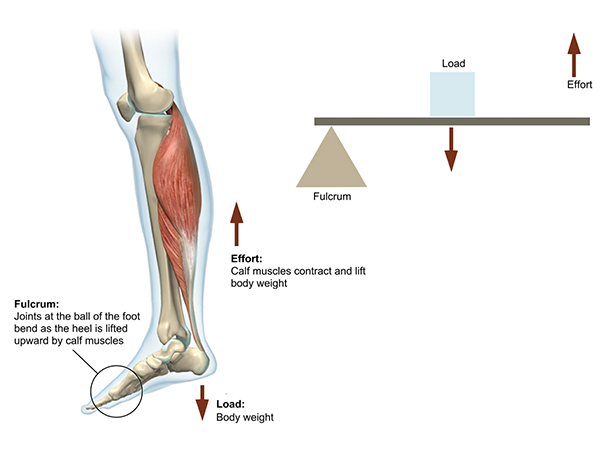
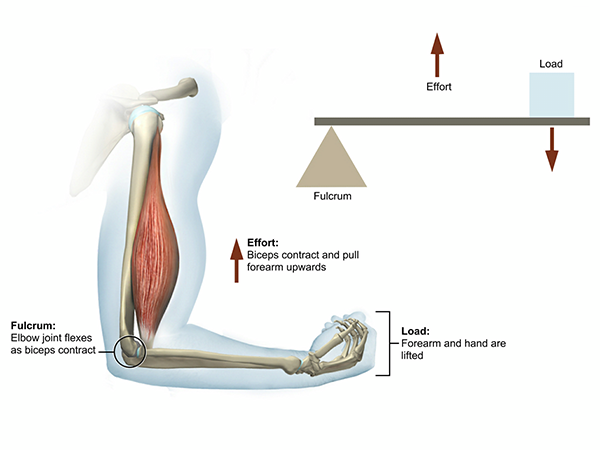
The levers involved in plantarflexion and elbow flexion. Illustrations from Visible Body Suite.
To understand this concept, let’s look at a basic example of a first class lever.
Pretend you need to move a really heavy rock. To lift it, you could create a first class lever system with a shovel and cinder block. You strategically position the cinder block so that when you use it as leverage, the middle of the shovel handle rests on it. Now, when you put your hands on the end of the shovel to apply a downward force (effort) that leverages the rock (load), your hands and the rock are equally distant from the cinder block (fulcrum). Thus, your effort arm and load arm are equal.
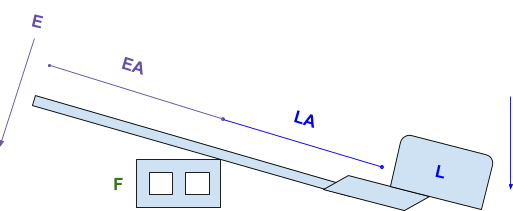
To make it even easier, you could move the cinder block closer to the rock, moving the fulcrum closer to the load. This decreases the load arm and increases the effort arm, making the lever more efficient and allowing you to lift the rock while applying less force.
Atlanto-Occipital Joint as a First Class Lever
An example of a first class lever in the human body is the head and neck during neck extension. The fulcrum (atlanto-occipital joint) is in between the load (front of the skull) and the effort (neck extensor muscles). The muscles are attached to the posterior part of the skull to allow for the greatest effort arm. The atlanto-occipital joint in the middle provides leverage, and when the muscles contract, pulling the occipital bone down, the front of the skull is lifted. Can you think of any other examples?
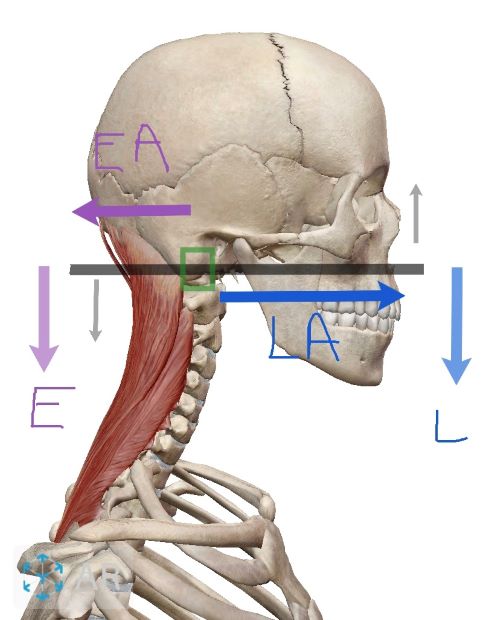 The atlanto-occipital joint as a first class lever. Screenshot from Visible Body Suite.
The atlanto-occipital joint as a first class lever. Screenshot from Visible Body Suite.
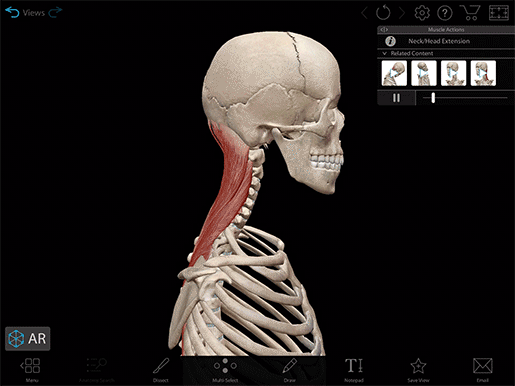 Neck flexion in action. Video footage from Visible Body Suite.
Neck flexion in action. Video footage from Visible Body Suite.
Elbow Joint as a Third Class Lever
Examples of the third class lever system are abundant in the human body. In our case of a weighted bicep curl and a calf raise, the lever system involved in a bicep curl is mechanically less efficient than the lever system involved in a calf raise. The elbow joint is an example of a third class lever, operating with the effort between the load and fulcrum.
The distance between the elbow joint and the insertion site of the bicep tendon is very small, especially when it’s compared to the distance between the elbow joint and the weight in your hand. The effort arm is significantly shorter than the load arm, making the ratio very small. When you try to curl the weight, your bicep has to work harder because it is at a mechanical disadvantage.
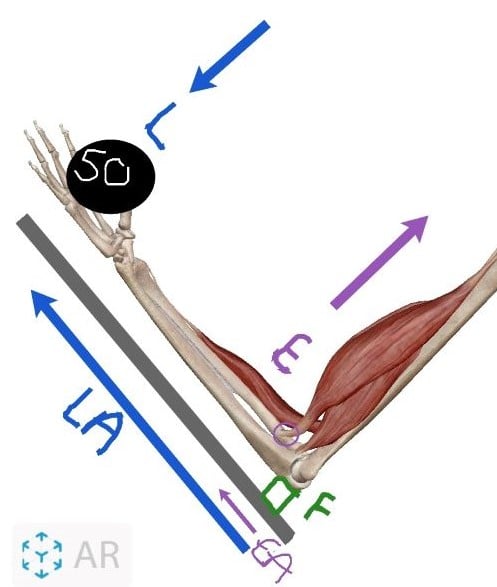 The elbow joint as a third class lever. Screenshot from Visible Body Suite.
The elbow joint as a third class lever. Screenshot from Visible Body Suite.
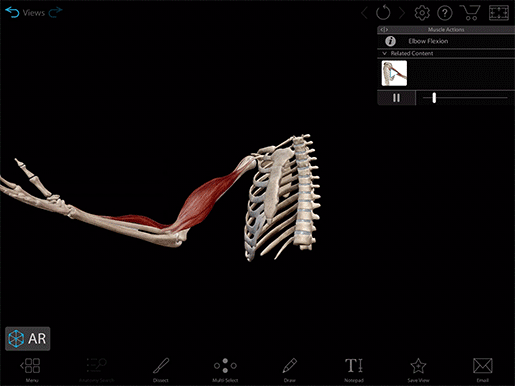 Elbow flexion. Video footage from Visible Body Suite.
Elbow flexion. Video footage from Visible Body Suite.
The Calf as a Second Class Lever
The gastrocnemius in your calf, however, is at a mechanical advantage. In plantar flexion, the lower leg acts as a second class lever. A second class lever is the only lever that can promise that the effort arm will always be greater than the load arm. This arrangement results in a bigger effort arm to load arm ratio, making the second class lever the most mechanically advantageous.
In a calf raise, the effort comes from the gastrocnemius muscle, which is attached to your calcaneus bone. The load comes from your body weight and the extra weight you are holding; this force acts on the lever system through the tibia. The fulcrum is made up of the metacarpophalengeal joint.
In this arrangement, the load is in the middle, and the effort is farthest from the fulcrum. Therefore, the act of plantarflexion can move much more weight than elbow flexion, even if your bicep is just as strong as your calf.
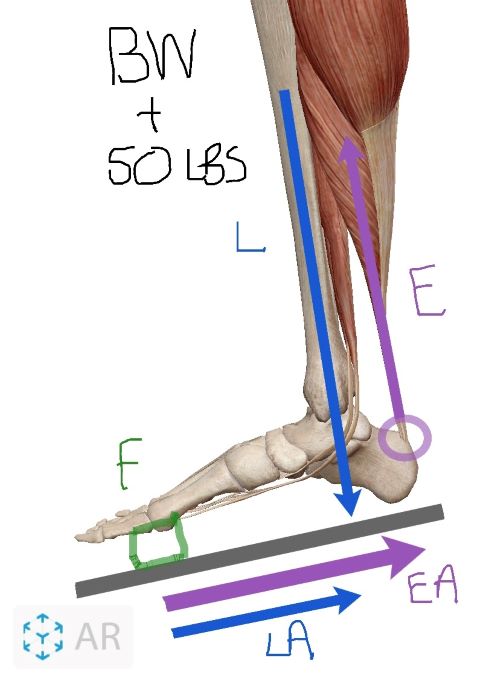 The calf as a second class lever. Screenshot from Visible Body Suite.
The calf as a second class lever. Screenshot from Visible Body Suite.
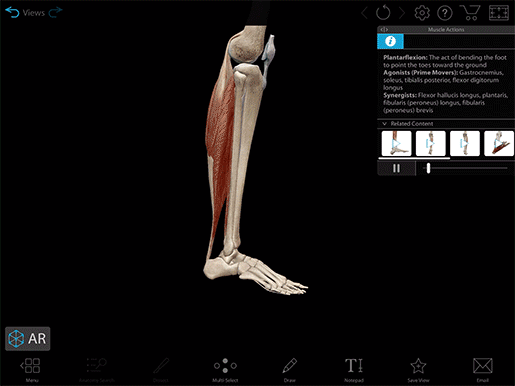 Plantarflexion in action. Video footage from Visible Body Suite.
Plantarflexion in action. Video footage from Visible Body Suite.
All of these lever systems are used throughout the entire human body. However, it can be tricky to figure out which system a joint uses! If you get stuck, remember that to classify a lever, you have to analyze where the forces are being applied. For example, some muscles exist on one side of a joint, but their tendon crosses over the joint and applies a force to a bone on the opposite side. This is what happens in the knee. Can you figure out which lever system the knee uses?
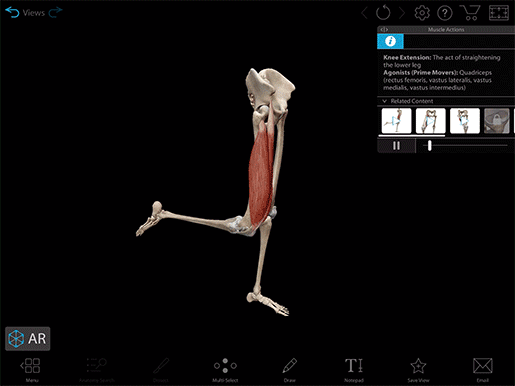 Knee extension. Video footage from Visible Body Suite.
Knee extension. Video footage from Visible Body Suite.
Like in the images above, you can use the draw tool in Visible Body Suite to draw diagrams to help you determine which kind of lever system a certain joint uses. Have fun learning!
Speaking of muscle actions and the knee joint...check out our Knee Flexion eBook to learn more about how this important movement works!
Be sure to subscribe to the Visible Body Blog for more anatomy awesomeness!
Are you an instructor? We have award-winning 3D products and resources for your anatomy and physiology course! Learn more here.




